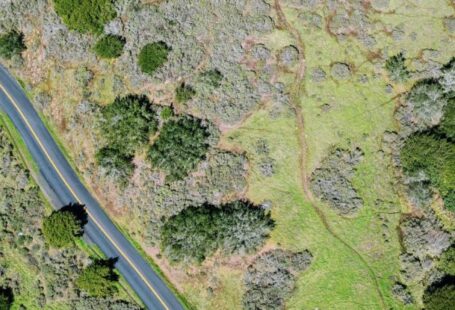Mapping economic data is a powerful tool that allows us to visualize complex information in a clear and intuitive way. By representing economic indicators on a map, we can quickly identify patterns, trends, and disparities that may not be immediately apparent when looking at raw data. In this article, we will explore how economic data can be visualized on a map and the benefits of using this approach in analyzing economic trends and patterns.
**Understanding Economic Data Mapping**
Economic data mapping involves the process of geographically representing economic indicators such as GDP, unemployment rates, income levels, and consumer spending on a map. This visualization technique allows us to see how economic variables vary across different regions, countries, or even within a specific area. By assigning colors, symbols, or shading to different data points on the map, we can create a visual representation that highlights the disparities and similarities in economic performance.
**Benefits of Visualizing Economic Data on a Map**
One of the key benefits of visualizing economic data on a map is the ability to identify spatial patterns and trends. For example, by mapping GDP per capita across a country, we can quickly see which regions are the most economically prosperous and which areas may require targeted economic development initiatives. This spatial perspective can provide valuable insights for policymakers, businesses, and researchers looking to understand the economic landscape more comprehensively.
Moreover, mapping economic data allows for easy comparison between different regions or countries. Instead of sifting through tables and charts, a quick glance at a map can reveal how economic indicators stack up against each other geographically. This comparative approach can help in benchmarking performance, identifying outliers, and understanding the underlying factors contributing to economic disparities.
**Types of Economic Data Mapping Techniques**
There are several techniques available for visualizing economic data on a map. One common method is choropleth mapping, where colors are used to represent different values of a variable within predefined boundaries such as administrative regions or census tracts. This technique is effective in highlighting regional variations and can help in identifying clusters or hotspots of economic activity.
Another popular approach is point mapping, where individual data points such as cities, companies, or economic indicators are plotted on a map with symbols or markers. Point mapping is useful for pinpointing specific locations of interest and understanding the spatial distribution of economic phenomena.
**Using Geographic Information Systems (GIS) for Economic Data Mapping**
Geographic Information Systems (GIS) are powerful tools that enable the creation, analysis, and visualization of spatial data. By integrating economic data with geographic information, GIS software allows users to create interactive maps, perform spatial analysis, and generate insights that may not be possible through traditional data visualization techniques.
GIS can help in overlaying multiple layers of economic data on a map, enabling users to explore relationships between different variables and understand the spatial dynamics of economic phenomena. For example, by overlaying population density with income levels, policymakers can identify areas with high poverty rates that may require targeted interventions.
**Incorporating Time Series Data into Economic Maps**
Another advanced technique in economic data mapping is incorporating time series data into maps to visualize trends over time. By animating maps or creating interactive visualizations that depict changes in economic indicators over different time periods, users can gain a deeper understanding of how economies evolve and respond to external factors such as policy changes, market trends, or natural disasters.
**Harnessing the Power of Economic Data Mapping**
In conclusion, visualizing economic data on a map offers a powerful way to gain insights into economic trends, patterns, and disparities. By leveraging mapping techniques, GIS technology, and time series data, analysts, policymakers, and researchers can uncover hidden relationships, make informed decisions, and communicate complex economic information in a clear and compelling manner. Whether it’s tracking regional economic development, analyzing market trends, or understanding the impact of policy interventions, economic data mapping is a valuable tool that can enhance our understanding of the economic landscape.





